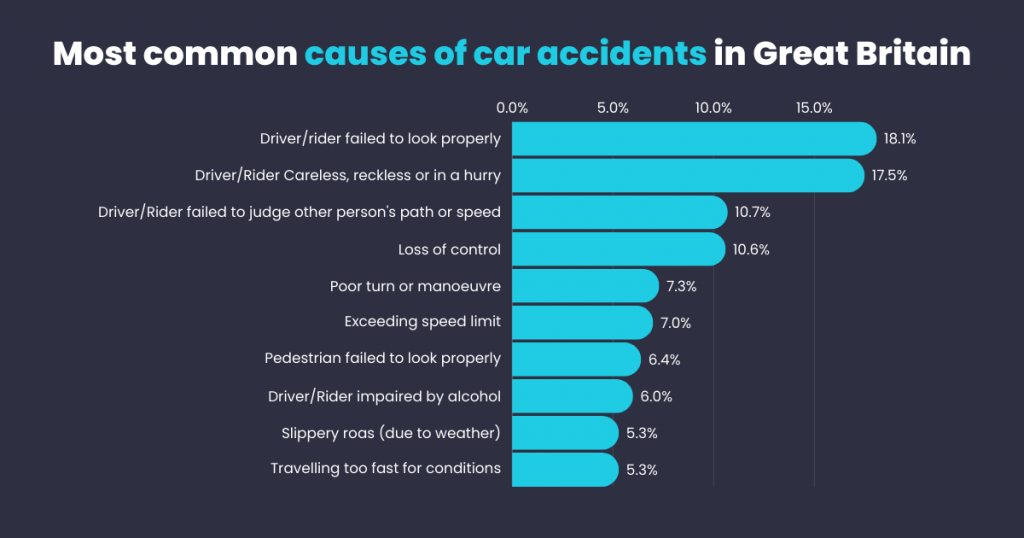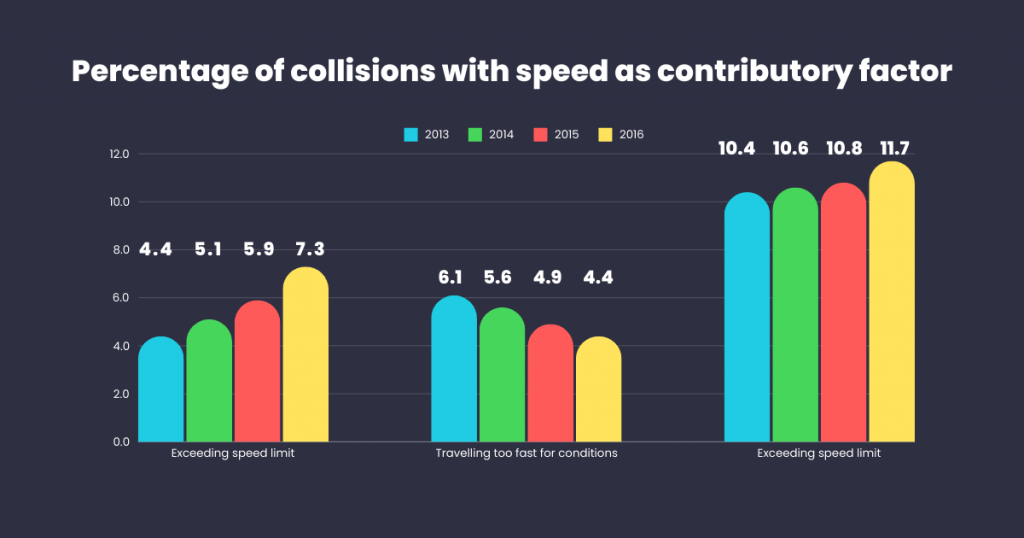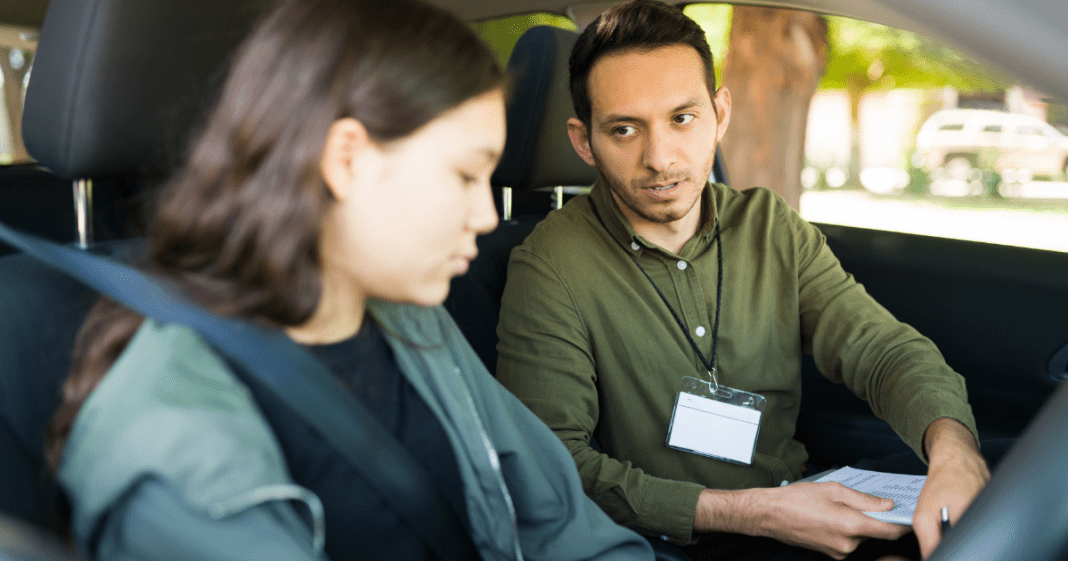Last Updated on April 3, 2025
Taking your driving test can be a nerve-wracking experience and can often cause anxiety. After weeks or even months of preparation, the last thing any learner driver wants is to fail their test. While some mistakes are bound to happen due to nerves, many people fail their driving test for reasons that are entirely avoidable. Understanding the most common reasons for failing can help you prepare more effectively and boost your confidence as you head into your practical driving test.
In the UK, driving examiners are particularly focused on safety and good driving habits. Many of the most common test fails involve poor observation, incorrect use of mirrors, and failing to react appropriately to signs and signals. These mistakes, if made repeatedly or in a serious way, can lead to an immediate fail. Thankfully, once you’re aware of these potential pitfalls, you can work on perfecting your driving skills and avoid common errors. This blog will cover the top 10 reasons for failing a driving test and, more importantly, explain how you can avoid them.
The following chart illustrates the trends in various collision contributory factors, such as exceeding speed limits or driving too fast for conditions, from 2013 to 2022. The data compares fatal collisions, all collisions, and those unadjusted for contributing factors like speed and conditions.

The graph indicates a downward trend in collisions due to exceeding the speed limit, with a notable decline after 2017. Although most categories show relatively stable patterns, the “any contributory factor (all collisions)” category had the sharpest decrease, while fatal collisions remained significantly lower in comparison. Overall, the data suggest improvements in road safety, with a reduction in collisions linked to key contributory factors. The reason that there are test fails in driving tests is to ensure that learner drivers get into the habit of safe driving.
Driving Test Fails: The Most Common Mistakes to Avoid
Failing a driving test can happen for a variety of reasons, but some are much more common than others. It’s important to be aware of what these frequent mistakes are, so you can focus your practice on avoiding them. The following sections will dive into the most common fails during a driving test and what you can do to prevent them from happening to you.
What Do Most People Fail Their Driving Test On?
One of the most frequent questions asked by learner drivers is, why do people fail their driving tests? The reasons vary from person to person, but trends show that certain errors consistently lead to failure. Below, we list the top 10 reasons for failing a driving test in the UK and break down how you can avoid them to ensure you’re fully prepared for your practical driving exam.

The Top 10 Most Common Reasons for Failing A UK Driving Test
1. Not Making Effective Observations at Junctions
One of the most common reasons for failing a driving test is failing to make effective observations at junctions. Examiners expect you to check for traffic properly before emerging into a new road or crossing a junction. Examples of common mistakes include failing to judge the speed of an approaching car, entering a roundabout too soon, or not observing before merging onto a dual carriageway.
How to Avoid It: To avoid this fault, you need to develop a habit of checking both ways well in advance of reaching a junction. Always look for any approaching vehicles and assess their speed before making your move. If in doubt, wait until it’s completely clear. When joining a dual carriageway, use your mirrors and check your blind spots before pulling out to make sure it’s safe to proceed. Remember, it’s better to be cautious than to cause another vehicle to slow down or take evasive action.
Below we look at the most common causes of car accidents in Great Britain where the police were able to report on a contributing factor.

According to the data, the biggest cause of accidents in Great Britain is the driver/rider failing to look properly. This is followed by careless/reckless driving and failure to judge path or speed. As we can see, one of the top reasons for driving test failure is also one of the biggest causes of car accidents in Great Britain.
Source: Department for Transport and Gov.uk (Data only includes accidents where a police officer attended the scene and a contributory factor was reported)
Lewis from Shift Driving School, who delivers driving lessons in Newcastle, highlights that the number one fault leading to test failure in his local area is inadequate observations. “Whether it’s during lane changes or when taking the wrong lane on a roundabout, failing to observe can lead to an immediate fail,” he explains. “While incorrect lane choice alone might not necessarily result in failure, combining it with poor observation – such as cutting across lanes without checking properly – often does”.
2. Incorrect Use of Mirrors When Changing Direction
Mirrors play a crucial role in maintaining awareness of your surroundings. A common reason for driving test failure is not using mirrors correctly when changing lanes, turning at roundabouts, or when exiting. For example, failing to check your mirrors when moving to exit a roundabout or pulling into a lane can cause a collision or inconvenience other drivers.
How to Avoid It: Use the mirror-signal-manoeuvre (MSM) routine religiously. Every time you change direction or speed, make it a habit to check all mirrors and blind spots thoroughly. If you’re unsure whether another vehicle is close, it’s always better to take extra care and check again before making your move. It’s particularly important to use your mirrors when exiting roundabouts or overtaking on dual carriageways to avoid forcing another vehicle to slow down or make a dangerous manoeuvre.
3. Failing to Move Off Safely
Another common driving test fail is failing to move off safely. This can occur when pulling away from the side of the road, on a slope, or when parked behind another vehicle. Mistakes can range from moving off without checking for oncoming traffic or forgetting to check blind spots.
How to Avoid It: Before moving off from behind a parked vehicle, take extra care to ensure there’s no oncoming traffic. Practise moving off in different situations, such as from a parked position on a hill or after an emergency stop. It’s crucial to make these checks consistently throughout your test, as failing to do so even once could result in a fail.
4. Incorrect Positioning When Turning Right at Junctions
Positioning is key when turning right at junctions, especially on busy roads. A common mistake is positioning too far to the left or the centre of the road when you should be closer to the right. Poor positioning can obstruct other road users, delay traffic, and increase the risk of accidents.
How to Avoid It: Always position your car close to the centre of the road when preparing to turn right at a junction. This makes it easier for oncoming traffic to pass and reduces the chance of confusion. When turning right at a roundabout, make sure you are in the correct lane early on and clearly signal your intentions. Remember to check your mirrors and blind spots before making the turn, and practise right turns in various junction scenarios to improve your spatial awareness and timing.
5. Not Responding Correctly to Traffic Lights
Traffic light errors are one of the most common reasons for failing a driving test. This includes failing to stop at a red light, not progressing when the green light shows, or stopping beyond the white line at junctions with an advanced stop line for cyclists.
How to Avoid It: Familiarise yourself with the different traffic light sequences and always be prepared to react accordingly. When you approach a junction, pay close attention to the lights and any cyclists or pedestrians. Make sure to stop behind the white line and always assess whether it’s safe to move on when the light turns green. If you’re unsure, take a few seconds to double-check before proceeding. Also, avoid entering a junction when it’s not clear to prevent blocking it.

6. Poor Steering Control
A lack of control over the steering wheel is another frequent cause of test failures. This includes steering too late or too early, causing the car to either mount the pavement, cross into another lane, or veer too close to other vehicles.
How to Avoid It: Smooth, controlled steering is something that can be improved through practice. Make sure you steer in a timely and measured way, whether you’re negotiating a bend, making a turn, or avoiding parked cars. Avoid over-correcting or steering too early, as this can cause you to drift out of your lane. Regular practice will help you develop the muscle memory needed for smooth steering, ensuring you can handle different road layouts with ease.
7. Failing to Respond Correctly to Traffic Signs
Traffic signs are essential for safe driving, yet ignoring or misreading them is a common cause of test failures. Mistakes such as driving in bus lanes when not allowed or failing to stop at a ‘stop’ sign can lead to a test fail.
How to Avoid It: Make sure you’re familiar with all the key traffic signs in the Highway Code. Pay close attention to signs as you drive and adjust your speed or lane accordingly. For instance, if you see a ‘stop’ sign, come to a complete halt even if the road appears clear. If there are bus lane signs, make sure you’re aware of the times you’re allowed to use the lane. Practise identifying and responding to signs in various driving environments to improve your reaction time.
8. Misinterpreting Road Markings
Road markings provide critical guidance, but not understanding or following them can lead to failure. Common mistakes include crossing solid white lines, ignoring direction arrows, or entering a box junction when the exit isn’t clear.
How to Avoid It: Study the Highway Code to understand the importance of road markings. When you approach an area with road markings, such as a mini-roundabout or a box junction, always follow the instructions provided by the markings. For example, don’t enter a box junction unless your exit is clear, and don’t cross solid white lines unless absolutely necessary. Practise in areas with complex road markings to ensure you can respond to them effectively during your test.
9. Poor Road Positioning During Normal Driving
Incorrect road positioning, such as drifting too close to the kerb or the centre of the road, is another common reason for failure. This can make other road users feel unsafe and lead to potential hazards.
How to Avoid It: Always aim to position your car in the centre of your lane, ensuring a safe distance from both the kerb and any oncoming vehicles. Use your mirrors regularly to check your position and adjust if necessary. If you’re driving on a dual carriageway, stay in the left lane unless overtaking, and avoid unnecessary lane changes. Practising this skill on a variety of roads, including narrow streets and wide dual carriageways, will help improve your positioning accuracy.
10. Not Driving at a Safe Speed
Driving too fast or too slowly is one of the most common reasons for failing a driving test. Exceeding the speed limit or not adjusting your speed to road conditions can lead to dangerous situations.
How to Avoid It: Always be aware of the speed limits and adjust your driving speed to suit the road conditions, weather, and traffic. For example, slow down in wet weather, busy areas, or when approaching bends. However, also be cautious of driving too slowly, as this can frustrate other drivers and create hazards. The key is finding a balance where you’re driving safely but confidently, and always within the legal speed limits. Practise maintaining safe speeds in different environments to ensure you’re comfortable adjusting your speed when necessary.
Please see the below data which looks at collisions between 2013-2022 where speed was a contributing factor:

Source: https://toptests.co.uk/driving-statistics/
As we can see, the main speed-related collision that we can see is when the driver has been exceeding the speed limit or travelling too fast for the condition.
Get a learner driver insurance quote today!
Conclusion
Failing your driving test can feel disheartening, but many of the most common reasons for failure are entirely preventable with the right preparation. By focusing on key areas such as observation, mirror usage, speed control, and positioning, you can significantly improve your chances of passing the test. Remember, the practical driving test is not only about showing that you can operate the car but also demonstrating that you can drive safely and considerately in real-world situations.
Nerves are natural during a driving test, but if you’re confident in your skills and aware of the common mistakes to avoid, you’ll have a much better chance of passing your test. Take the time to practise, go over the areas where you feel least confident, and always prioritise safety. With consistent effort and careful attention to detail, you’ll be on the road to passing your driving test and gaining the freedom that comes with a full UK driving licence.
FAQs
If you fail your driving test, you will receive a test report outlining the faults you made. You’ll need to wait at least 10 working days before booking another test. Use the feedback to improve before your next attempt.
The practical driving test typically lasts around 40 minutes. It includes a mix of driving on different roads, manoeuvres, and possibly an emergency stop.
The practical driving test typically lasts around 40 minutes. It includes a mix of driving on different roads, manoeuvres, and possibly an emergency stop.
Yes, you can use your own car for the driving test as long as it meets the legal requirements, including being insured for the test.
Yes, driving too slowly without reason can be dangerous and cause frustration to other road users. This can be marked as a fault on your test, especially if it affects the flow of traffic.









